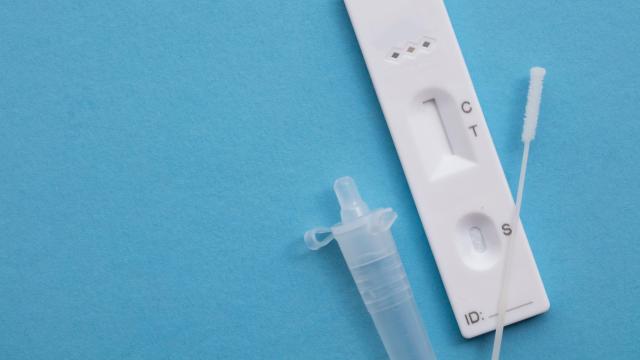You may have already stocked up on your at-home COVID tests and have a few sitting around, you should know that how — and more importantly, where — you store these rapid tests matters.
Though there may be some slight variation between the different brands of rapid tests, storing them at temperatures above or below a certain range can make the tests less effective. But this isn’t like taking slightly expired acetaminophen that might not work quite as well as it did when you first bought it: Given their purpose, at-home COVID tests need to be effective.
How temperature affects at-home COVID-19 tests
In order to produce the most accurate results, at-home COVID-19 tests should be stored at room temperature. Check the instructions that come with the test to get specific details, but generally speaking, “room temperature” ranges between 20 and 24 degrees Celsius.
This may sound obvious, and like something you would do anyway, but depending on where you live and how you get the tests, there are a few other temperature-related factors to consider:
Hot temperatures
Exposure to hot temperatures can permanently damage chemicals and sensitive proteins used in rapid COVID tests, compromising their effectiveness, Dr. Amy Mathers, associate professor of medicine and pathology and associate director of clinical microbiology at the University of Virginia School of Medicine, told NBC’s TODAY Show.
Cold temperatures
At-home COVID tests fare a little better in colder temperatures, Mathers says — as long as the liquids in the test kit don’t freeze. Just be sure to bring them back up to room temperature before taking a test, and store any remaining tests at room temperature for future use.
How to keep at-home COVID tests at the right temperature
While the tests should be stored and used at room temperature, if they temporarily end up in temperatures between 2 and 30 degrees Celsius, they should still be salvageable, says Dr. Omai Garner, associate clinical professor and director of clinical microbiology at UCLA Health. But that’s where the flexibility ends: “The box shouldn’t get outside of those temperatures — even temporarily,” he explains.
This means taking into consideration how they’re getting to, and where they end up in your home.
Transit/delivery
If your tests are being delivered to your home, use the tracking information provided for the shipment so you know when the package is supposed to arrive. Then, bring it in from outside as soon as possible so it doesn’t sit in your mailbox or on your front steps exposed to extreme temperatures.
Along the same lines, if you’re purchasing the tests locally, don’t leave them in your car (or the trunk of your car). A few minutes here and there between other errands is one thing, but avoid leaving the tests in there for hours, or overnight.
At home
Some parts of your home are warmer and cooler than others, so keep that in mind when storing your at-home COVID tests. For example, if you have a closet you use for storage that is also where your hot water heater lives, find another place for your tests. The same goes for a cabinets or other storage areas near heaters, vents, or other sources of heat. You also want to pick a spot that isn’t humid or damp, like an unfinished basement or garage, or a poorly ventilated bathroom.

Leave a Reply
You must be logged in to post a comment.